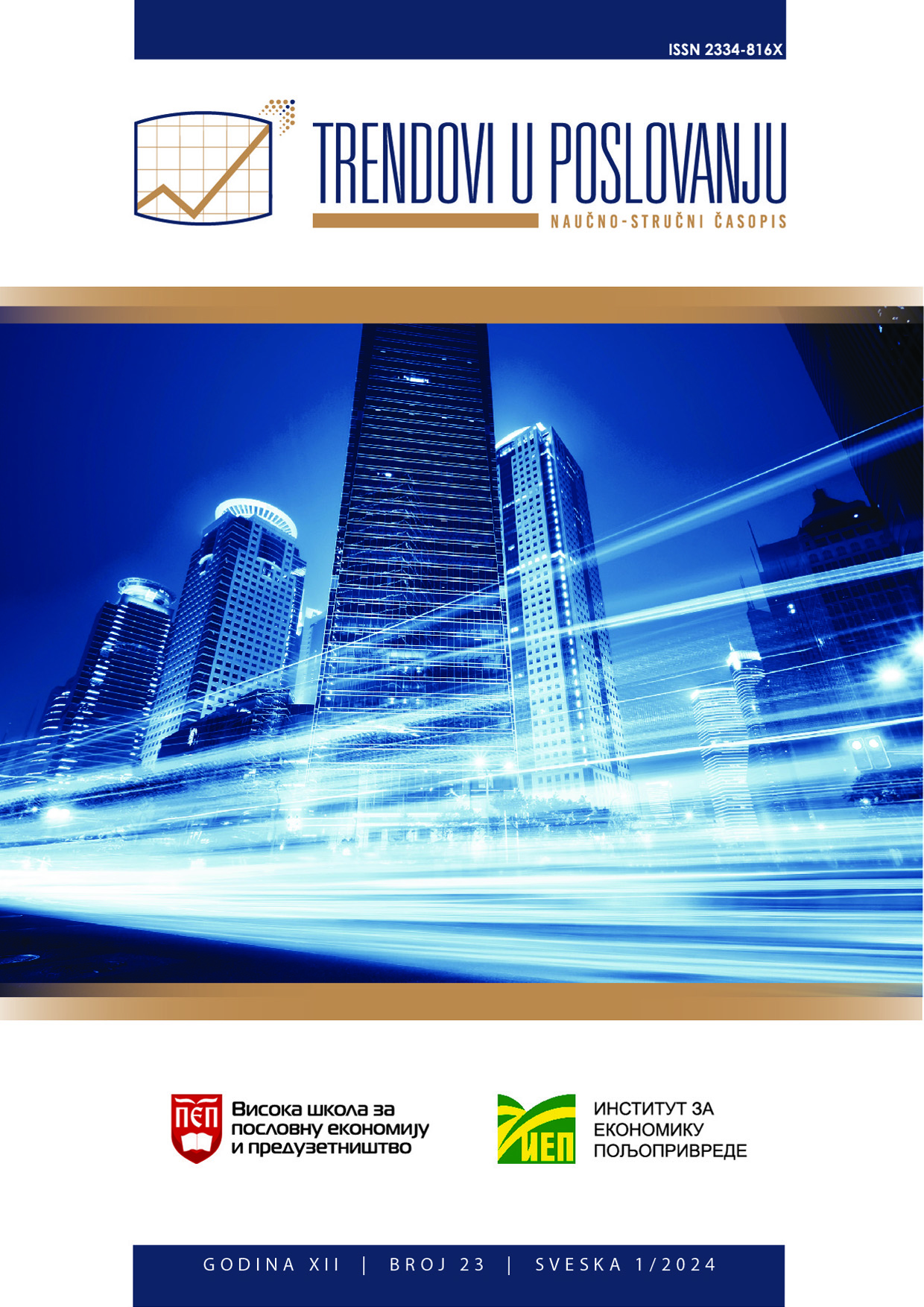APPLICATION OF FMEA IN THE AUTOMOTIVE INDUSTRY: PRESENT SITUATION AND PERSPECTIVES IN THE REPUBLIC OF SERBIA
Ključne reči:
FMEA, current situation, future perspectives, automotive industry, Republic of SerbiaApstrakt
This paper conducts an analysis of the application of FMEA in companies operating in the automotive industry within the territory of the Republic of Serbia, focusing on the current situation and future perspectives. The basic characteristics of implementing this analysis are presented, such as the number of employees involved in the implementation process and the prevalence of different types of FMEA in the considered companies. Additionally, the study presents and analyses the needs for methodological improvements and the adoption of modern tools in conducting FMEA. The aim of this research is to present the current situation and challenges in the application of FMEA in the automotive industry in the Republic of Serbia, as well as to identify possibilities for future improvements.Reference
IATF 16949:2016, ‘Quality management system requirements for automotive production and relevant service parts organizations, 1st edition’. International Automotive Task Force, 2017.
AIAG&VDA, Failure Mode and Effects Analysis - FMEA Handbook: design FMEA, process FMEA, supplemental FMEA for monitoring & system response. Southfild, Michigan: Automotive Industry Action Group, 2019.
Li, He, Angelo P. Teixeira, and C. Guedes Soares. "A two-stage Failure Mode and Effect Analysis of offshore wind turbines." Renewable Energy 2020., 162, pp. 1438-1461.
Yazdi, M., Sahand D., and Hashem S.. "An extension to fuzzy developed failure mode and effects analysis (FDFMEA) application for aircraft landing system." Safety science 2017., 98, pp. 113-123.
Ðurić, G., Mitrović, Č., Komatina, N., Tadić, D., & Vorotović, G. The hybrid MCDM model with the interval Type-2 fuzzy sets for the software failure analysis. Journal of Intelligent & Fuzzy Systems, 2019., 37(6), pp. 7747-7759.
Wu, Z., Liu, W., & Nie, W. Literature review and prospect of the development and application of FMEA in manufacturing industry. The International Journal of Advanced Manufacturing Technology, 2021., 112, pp. 1409-1436.
Komatina, N., Tadić, D., Aleksić, A., & Banduka, N. The integrated PFMEA approach with interval type-2 fuzzy sets and FBWM: A case study in the automotive industry. Proceedings of the Institution of Mechanical Engineers, Part D: Journal of Automobile Engineering, 2022., 236(6), pp. 1201-1212.
Aleksić, A., Milanović, D. D., Komatina, N., & Tadić, D. Evaluation and ranking of failures in manufacturing process by combining best‐worst method and VIKOR under type‐2 fuzzy environment. Expert Systems, 2023., 40(2), pp. 13148.
Oliveira, C. R. C. D., Pereira, J. C., & Pizzolato, N. D. Combined application of condition-based maintenance and reliability centred maintenance using PFMEA and lean concepts-a case study. International Journal of Information and Decision Sciences, 2023., 15(3), pp. 302-325.
Aguirre, P. A. G., Pérez-Domínguez, L., Luviano-Cruz, D., Gómez, E. M., Olguin, I. J. C. P., & Ramírez, J. O. D. Risk assessment with value added Pythagorean fuzzy failure mode and effect analysis for stakeholders. IEEE Access, 2021., 9, pp. 149560-149568.
Zhou, J., Liu, Y., Xiahou, T., & Huang, T. A novel FMEA-based approach to risk analysis of product design using extended Choquet integral. IEEE Transactions on Reliability, 2021., 71(3), pp. 1264-1280.
Rajasimha, R. C., Arjun, V., & Chandrashekhar, H. G. Supplemental FMEA for Monitoring and System Response of Electronic Power Steering Control System Functional Safety (No. 2022-28-0404). SAE Technical Paper, 2022.
Fu, Y., Qin, Y., Wang, W., Liu, X., & Jia, L. An extended FMEA model based on cumulative prospect theory and type-2 intuitionistic fuzzy VIKOR for the railway train risk prioritization. Entropy, 2020., 22(12), pp. 1418.
Zandi, P., Rahmani, M., Khanian, M., & Mosavi, A. Agricultural risk management using fuzzy TOPSIS analytical hierarchy process (AHP) and failure mode and effects analysis (FMEA). Agriculture, 2020., 10(11), pp. 504.
Kumar, M. B., & Parameshwaran, R. A comprehensive model to prioritise lean tools for manufacturing industries: A fuzzy FMEA, AHP and QFD-based approach. International Journal of Services and Operations Management, 2020., 37(2), pp. 170-196.
Başhan, V., Demirel, H., & Gul, M. An FMEA-based TOPSIS approach under single valued neutrosophic sets for maritime risk evaluation: the case of ship navigation safety. Soft Computing, 2020., 24(24), pp. 18749-18764.
Kumar, P., Raju, N., Navaneetha, M., & Ijmtst, E. Reliability analysis of dumpers through FMEA-TOPSIS integration. International Journal for Modern Trends in Science and Technology, 2021., 7(09), pp. 110-8.
Webert, H., Döß, T., Kaupp, L., & Simons, S. Fault handling in industry 4.0: definition, process and applications. Sensors, 2022., 22(6), pp. 2205.
de Andrade, J. M., de M. Leite, A. F. S., Canciglieri, M. B., Szejka, A. L., de FR Loures, E., & Canciglieri, O. A multi-criteria decision tool for FMEA in the context of product development and industry 4.0. International Journal of Computer Integrated Manufacturing, 2022., 35(1), pp. 36-49.
Salah, B., Alnahhal, M., & Ali, M. Risk prioritization using a modified FMEA analysis in industry 4.0. Journal of Engineering Research, 2023., 11(4), pp. 460-468.
Preuzimanja
Dodatne datoteke
Objavljeno
Broj časopisa
Sekcija
Licenca
- Autori su saglasni da se autorska prava za ovaj rad prenose na Urednika/Izdavača.
- Autori zadržavaju pravo da budu naznačeni uvek kada se rad objavi u celosti ili u delovima.
- Autori mogu koristiti rad u nastavne i nekomercijalne svrhe bez traženja dozvole od Izdavača.


